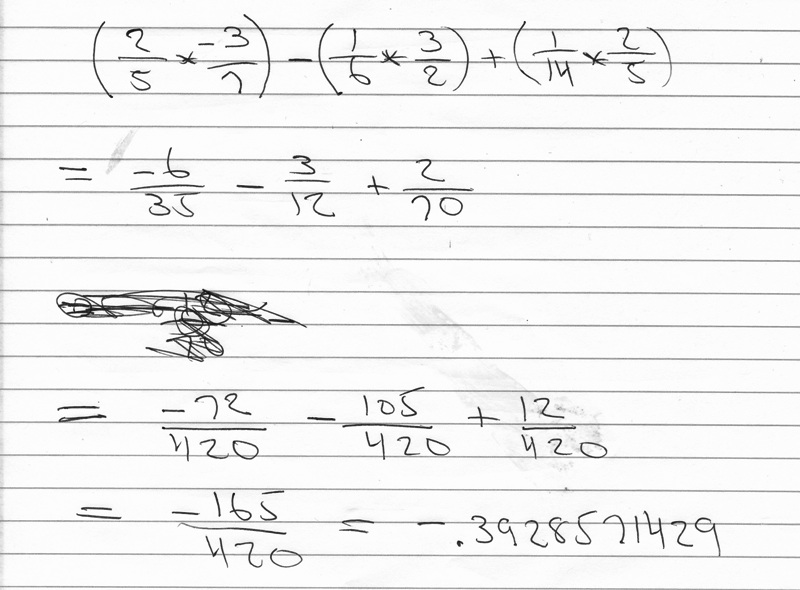2/5*-3/7-1/6*3/2+1/14*2/5
you scan left to right looking for exponents or roots.
there are none.
you scan left to right looking for multiplication or division.
there are plenty.
you resolve each set of multiplication and division in order from left to right.
you scan left to right looking for addition or subtraction.
you resolve them left to right.
you will get:
2/5*-3/7-1/6*3/2+1/14*2/5 becomes:
(2/5*-3/7) - (1/6*3/2) + (1/14*2/5) which becomes:
-.1714285714 - .25 + .0285714286 which becomes:
-.3928571429
if you did the calculations manually and kept the solution in fractional form, you would get what is shown in the following worksheet.

the least common multiple for the denominators is 420.
the numerator and denominator of -6/35 is multiplied by 12/12 to get -72/420.
the numerator and denominator of -3/12 is multiplied by 35/35 to get -105/420.
the numerator and denominator of 2/70 is multiplies by 6/6 to get 12/420.
since they're all under the common denominator of 420, you just add them together to get -165/420 which is equal to -.3928571429 in decimal form.
your calculator and your manual calculations will agree if you perform them correctly.
order of operations says that multiplications and divisions are done in order from left to right before you do any additions or subtractions.
that's exactly what we did above and in the worksheet.